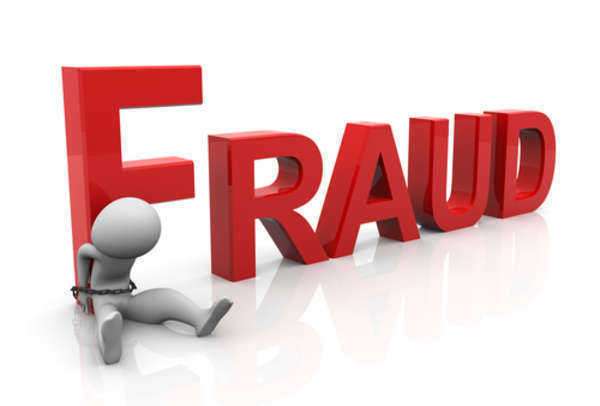The Federal Trade Commission Act of 1914











If you are thinking about starting a business, you must first develop a cost/benefit analysis to weigh the pros and cons of your prospective venture—if your predicted costs outweigh the potential benefit, you should refrain from starting a small business. The resources in this article will provide the essential steps for starting a small business.
To start your own business, you must construct a business plan. There are multiple formulas used to construct a business plan, however, certain elements remain consistent in all business plans. Your business plan should include a description of your business, an executive summary, a plan elucidating on the management and marketing initiatives of your business, final projections and the appropriate documentation for starting a small business in the state which you reside.
The business plan is crucial in starting a business; the ability to secure credit, outside funding and/or finances may hinge on your business plan.
To start a business you must include the following information within your business plan:
1. Cover Sheet
2. The Executive Summary (a statement that illuminates the purpose of the business)
3. Table of Contents
4. Body of the Document:
a. The Business
i. Description of your business
ii. Marketing
iii. Cost of Operating
iv. Costs associated with personnel
v. Costs associated with business insurance
b. Financial Data Concerned With Your Business
i. Loan Applications (secured from financial institutions)
ii. Capital supply list and equipment
iii. Balance Sheet
iv. Breakeven analysis
v. Profit and loss statements
vi. Three-year summary (goals of your small business)
vii. Detail by month (start from the first day the small business opens)
viii. Detail by quarters for second and third year
ix. Pro-forma cash flow
c. Supporting Documents Associated with How to Start a Small Business
i. Tax returns for all supporting partners in the business for three years as well as personal financial statements (financial institutions will provide these forms)
ii. Copy of the franchise contract and supporting documents provided by the franchisor (only needed for franchise businesses)
iii. Copy of purchase agreement or proposed lease for building space
iv. Copy of licenses and other legal documents
v. Copy of resumes for all principals
vi. Copies of cover letters of intent from suppliers and entities attached to the business
After you have developed your business plan, the next suggestion to starting a business would require you to secure assistance and training from counseling services. These programs—which should be sponsored by the United States Small Business Administration—will offer advice (and security to the lender in the form of a guarantee) regarding financing, choosing a location and bringing greater efficacy to your business model.
To secure business assistance and training for starting a small business, you may visit the Small Business Administration website (located at www.sba.gov) to access their online resources and locate an SBA office in your area. Small business development centers, SCORE, U.S. Export Assistance Centers and the Women’s Business Centers are also valuable resources to help you start your own business.
The next step to starting a small business is choosing a location. This step is crucial when you start your own business. You must choose a location that is customer-friendly and possesses a population/demographic with high demand for your good or service. Also, you will need to comply with the area’s zoning laws. Choosing a location with lax or lucid zoning regulations will streamline your ability to start a business.
The ideal location for your business will depend on several factors. Before choosing a location to start a business, you must evaluate your business activity. You must answer the following questions to narrow your location options:
Do you manufacture products for distribution?
Do you have Employees?
Do your customers come to you or do you have to go to your customers?
If your small business depends heavily on traffic (drive-by or pedestrian) you will want to seek a popular retail location (mall or downtown area). If your prospective customers will seek your business or service, you will want to find a space that is easily accessible from population centers, public transportation hubs and major roads.
Before you start your own business, you must contact your local zoning authority to make sure you comply with your city’s zoning policies and ordinances. You should consider you advertising methods and compare them to sign regulations established by your local government—a number of localities will set restrictions on the appearance and size of advertisements.
The most important aspect to starting a small business is securing financing. Without financing, you will not be able to afford equipment, employees, rental space or any resource needed to produce a product or service. The United States Small Business Administration provides a variety of loan programs to start your own business. Like other forms of financing (mortgages, auto loans, credit cards etc.) you will need to qualify for small business financing. If you do not wish to participate in one of the SBA’s loan programs, you may seek financing from your bank (or another financial institution), friends, family, or private investors.
7(a) Loan Program: This loan program offers financing for businesses with special requirements, such as entities that export goods or services to foreign nations or businesses that operate in rural areas.
Microloan Programs: This program offers small, short-term loans to small businesses or not-for-profit child-care centers. The SBA will provide funds to designated intermediary lenders. These institutions will then provide small loans to eligible small business owners. The maximum loan awarded is $50,000, while the average micro-loan is roughly $13,000.
CDC/504 Loan Program: This program provides long-term, fixed-rate financing to small businesses to acquire fixed assets for modernization or expansion. These loans are only offered to Certified Development Companies, which are non-profit corporations established to bolster the economic development of the community it resides.
After you have secured appropriate financing, you must decide on the form of business entity you wish to establish. The form of business will determine your tax obligations. The following list will provide the viable structures and their coordinating tax forms.
Sole Proprietorships:
Income tax is filed with form 1040 (Schedule C)
Self-Employment Tax is filed with Schedule SE on Form 1040
Estimated Tax is filed under 1040-ES
Social Security and Medicare taxes and income tax withholding are filed under 941, 943 and 944
Federal unemployment Tax is filed under form 940
Partnership: Relationship existing between multiple individuals who join to form a business venture. Each individual will contribute money, labor, property and skill to share in the profits or losses of the business) Partnerships are required to file an annual information return to report the income, gains, losses, deductions etc. from its operations, however, a partnership does not have to pay income tax. Instead, the formation will pass any profits or losses onto its partners. Each partner will include his or her share of the entity’s income or loss on an individual tax return. Partnerships must furnish copies of Schedule K-1 (found on Form 1065).
Corporation: Shareholders exchange money for the corporation’s capital stock. This structure takes the same deductions as a sole proprietorship to figure its taxable income.
Income Tax is filed under Form 1120 (U.S. Corporation Income Tax Return)
Estimated Tax is filed under Form 1120-W (Estimated Tax For Corporations)
Employment Taxes are filed under Forms 940, 941 and 943
S-Corporation: Corporations that elected to pass corporate income, deductions and losses through to their shareholders for federal tax purposes.
Income Tax is filed under 1120 S (K-1)
Estimated Tax is filed under 1120-W
Employment Taxes are filed under Form 940, 941 and 943 (for farm employees)
S-Corporation Shareholders are required to file their income tax under Form 1040 under Schedule E
Limited Liability Company: A business structure allowed by state statute. Similar to that of a corporation, the owners have limited personal liability for the debts and actions of the formation. Other features of an LLC are similar to a partnership, which provides pass-through taxation and management flexibility to the entity. The United States Federal Government does not recognize and LLC as a formal classification for federal tax purposes—an LLC is required to file a corporation, sole proprietorship or partnership for tax purposes. LLC’s that are not automatically classified as a corporation must file Form 8832 to choose their classification.
To start a business you must create the legal name of the formation; the legal name is derived from the name of the person or entity that owns the business. For example:
If you are the sole owner of a business, the legal name is your full name.
For a partnership, the legal name is the name affirmed in your partnership agreement or the surnames of the partners
If your business is an LLC or a corporation, the legal name is the one registered with the state government where the business is headquartered.
The legal name of the business is required on all government applications and forms, including the application for employer tax IDs, permits and licenses. If you wish to open a small business or sell products under a different name, you must file a “fictitious name” form with your local government. The requirements for a fictitious name filing will vary between states. To ensure compliance with your local state’s regulations, please visit the following website: https://www.sba.gov/content/register-your-fictitious-or-doing-business-dba-name.
The next step on how to start a small business requires you to obtain a Federal Tax Identification Number. As a business owner, you will need to pay business taxes—in addition to personal taxes. All businesses are required to pay state, federal and in some cases, local taxes. The majority of small businesses are required to registers with the IRS and both state and local revenue agencies to receive a tax ID number or permit.
The Federal Tax Identification Number (also referred to as the Employer Identification Number) is used to identify business entities in the United States. When starting a small business you must file Form SS-4 with the IRS. This process in how to start a small business is mandatory for businesses with employees, corporations, business partnerships and other organizations.
In addition to the federal tax identification number, you—as a small business owner—are required to obtain Tax permits and IDs from your state’s revenue agency. A small business that operates within a state is required to register for one or multiple tax id numbers, permits or licenses, including sales and use tax (seller’s permit), unemployment insurance tax and income tax withholding. If you are planning to sell products—and thus collect sales taxes—you are required to obtain a Vendor’s license or a Sales Tax Permit from your state or local government. To learn about your state’s specific rules on these licenses and permits please visit the following website: https://www.sba.gov/content/learn-about-your-state-and-local-tax-obligations.
Aside from business taxes levied by the federal government, small business owners will have to pay state and local taxes. Each locality institutes its own tax laws. In most states, small business owners are required to register their business with a local tax agency and apply for specialized tax permits. Moreover, nearly every state will collect a corporate or business income tax. Your specific tax requirement will depend on the legal structure of your formation. Lastly, small business owners with employees are responsible for paying specific taxes required by their state. All states will require payment for workers’ compensation insurance and unemployment insurance. To understand your state’s particular tax obligations, please visit: https://www.sba.gov/content/learn-about-your-state-and-local-tax-obligations.
When you start a business you are required to obtain licenses to legally operate. Depending on your small business, you may be required to obtain licensing at the federal, state and/or local level. Aside from the basic operating license, you may need to apply for specific permits if your business is aligned with farming, alcohol, the environment etc. Regulations will vary by state, locality and industry; it is therefore crucial to acknowledge the licensing rules where your small business is located. If you do not comply with regulations for permits and licenses you will be susceptible to punishments, including exorbitant fines. For information on licenses and permits for your particular state, please visit: https://www.sba.gov/content/obtaining-business-licenses-permits.
When starting a business, hiring your first employee marks a crucial step in the broader process. You must understand—and comply with—all local and federal regulations that come with hiring workers. We have provided a check-list for all federal and state requirements associated with hiring employees:
Before hiring employees, you must obtain an employment identification number from the IRS. To obtain the document, contact the IRS or apply online
Keep Records of Employment Taxes
Form W-4: Employees must provide this form to you with a signed withholding exemption certificate (found on form W-4) on or before the date of employment. After you receive this form you must submit it to the IRS.
Form W-2: Each year, you must report wages paid and taxes withheld for each employee to the federal government. You must complete W-2 for each paid employee; you must also send Copy A of the form to the Social Security Administration by the last day of February to report the wages and taxes of your workers for the previous taxable year.
Federal law requires all business owners to verify eligibility to work in the U.S. Within three days of hire, you are required to complete the Employment Eligibility Verification Form (I-9 form). This form is not filed with the government, but instead, kept in your possession for three after the hiring date—the U.S. Immigration and Customs Enforcement agency will conduct a routine workplace audit to ensure that you are properly completing and retaining the forms.
Your local tax obligation is dependent on your state’s tax law. However, all states require a business owner to comply with following policies:
You must register—within 20 days of the hiring date– all new employees with your state’s New Hire Reporting Program.
Obtain and carry Workers’ Compensation insurance
You may be required to pay unemployment insurances taxes ; if your business is required to pay, you must register your small business with your state’s workforce agency
Obtain disability insurance (if required)